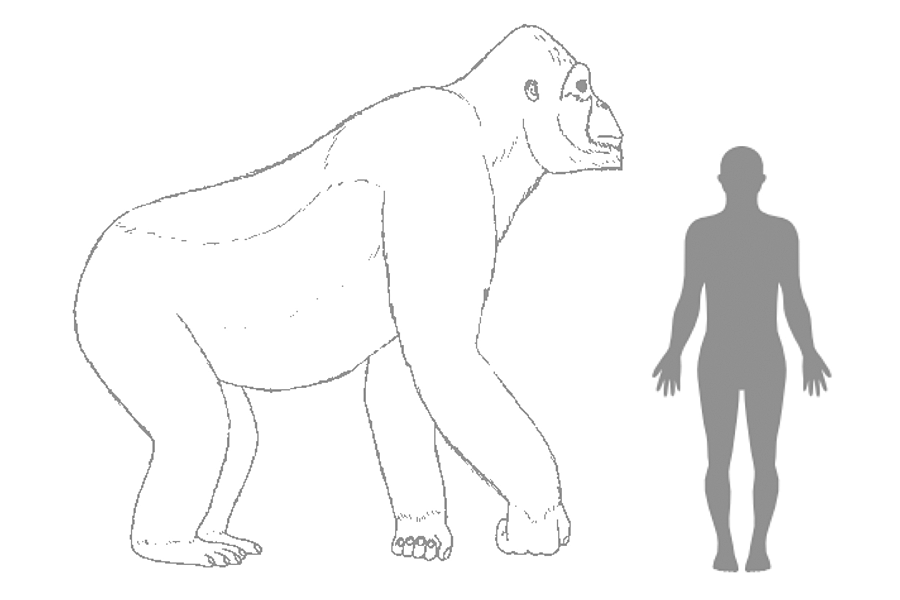What drove the real King Kong to extinction? Check the teeth.
Loading...
Gigantopithecus blacki, a humongous ape that roamed the Earth hundreds of thousands of years ago, may have been the closest thing to a real King Kong.
Scientists know little about the enormous primate. All they have to study are a handful of teeth and jaw bones.
But these ancient teeth may say a lot about Gigantopithecus, including how the animal died.
Scientists examined the enamel of these primate teeth to answer questions about Gigantopithecus in a new paper published in the journal Quaternary International.
From the tooth enamel, the researchers learned that the massive ape was a vegetarian.
"Our results indicate that the large primates only lived in the forest and obtained their food from this habitat," study author Hervé Bocherens of the University of Tübingen in Germany explained in a news release.
And that diet may have contributed to the gigantic beast's extinction, which is thought to have occurred around 100,000 years ago.
Dr. Bocherens explained that the animal's size and metabolism would have made it difficult to survive in a changing environment.
"Gigantopithecus presumably depended on a large amount of food. When during the Pleistocene era more and more forested areas turned into savanna landscapes, there was simply an insufficient food supply for the giant ape," he said.
Gigantopithecus is thought to have weighed between 440 and 1,100 pounds, still a fraction of the size of King Kong, which is fabled to have weighed 40,000 to 120,000 pounds.
Scientists had previously speculated about Gigantopithecus' diet, but they were divided as to whether the ape ate meat or was a vegetarian. Some even thought that that the primate ate exclusively bamboo, like a panda.
Understanding the ancient animal's diet can help scientists piece together the history of such a fossil-poor extinct species.
"In order to be able to comprehend the evolutionary history of primates, it is important to take a look at their diet," Bocherens said.
The handful of teeth and jaw bones, the only specimens of the huge ape species, were found in China and Thailand. Gigantopithecus was first identified in 1935 when a paleontologist stumbled upon a heavy tooth in a Chinese apothecary. Gustav Heinrich Ralph von Koenigswald, the paleontologist, realized the fossil, labeled a "dragon tooth," was strange.
Since then, the limited fossil-record of Gigantopithecus has yielded few clues into the life, and death, of the humongous ape.
"But now, we were able to shed a little light on the obscure history of this primate," Bocherens said. "Gigantopithecus was an exclusive vegetarian, but it did not specialize on bamboo."









